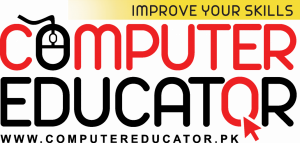Introduction of HR In Karachi Pakistan
Human resources are the greatest valued and sole assets of an organization. The popular management of an organization’s human resources is a stimulating, dynamic, and interesting task, especially at a time when the world has become a global village and parsimonies are in a state of flux. The insufficiency of talented resources and the rising expectations of the modern-day employee have extra increased the complexity of the human resource purpose. Unfluctuating though exact human resource functions/activities are the responsibility of the human resource section, the actual organization of human resources is the responsibility of all the directors in an organization.
Introduction to Human Resource Course Content:
- Strategic Management
- Training and Development
- Compensation and Benefits
- Employment Relationship Management
- Labor Laws
- Introduction to HR
- HR Management Foundation
- Recruitment and Selection
- Human Resource Information System – HRIS
- ERP Human Resource Management / HCM
Human resource management contains the leadership and simplification of the following key life cycle process areas:
- Human resources obedience
- Employee selection, hiring, and on boarding
- Performance management
- Compensation rewards and benefits
- Talent development and succession development
Core Functions of HR
Human resources (HR) professionals’ deportment an inclusive variation of tasks within an organizational structure. A momentary rundown on the core purposes of human resource departments will be useful in framing the more common events a human resource professional will conduct. The core functions can be concise as follows:
Staffing
- Classifying and fulfilling talent needs (through recruitment, primarily)
- Utilizing numerous recruitment skills to acquire a high volume and diverse pool of candidates (and to filter them based on experience)
- Defending the company from lawsuits by sufficient legal requirements and conserving ethical hiring practices
- Writing employee contracts and exchanging salary and profits
- Firing employee contracts when essential
Training and Professional Development
- Training and preparing novel employees for their roles
- Providing preparation occasions (internal training, learning programs, conferences, etc.) to keep workers up to the period in their particular fields
- Making management prospects and responding to employees and managers
Employee and Labor Relations:
- Arbitrating discrepancies between employees and employers
- Mediating disagreements between employees and other employees
- Scrutinizing claims of harassment and other workplace abuses
- Discussing employee rights with unifications, management, and stakeholders
- Substitute as the voice of the association and/or the voice of the employees during any broader administrative issues affecting employee welfare
Safety and Health
HR managers are also accountable for understanding and realizing the best safety and health performs in their industry and addressing any relevant employee concerns.
Safety and health activities include the following:
- Confirming compliance with permitted necessities based on job purpose for safety measures (i.e., hard hats in construction, obtainable counseling for law enforcement, suitable safety equipment for chemists, etc.). Many of these necessities are quantified by the Occupational Safety and Health Administration (OSHA).
- Implementing new safety trials when laws change in a specified industry
- Conversing safety and compliance with relevant management departments
- Conversing safety and compliance with unifications
